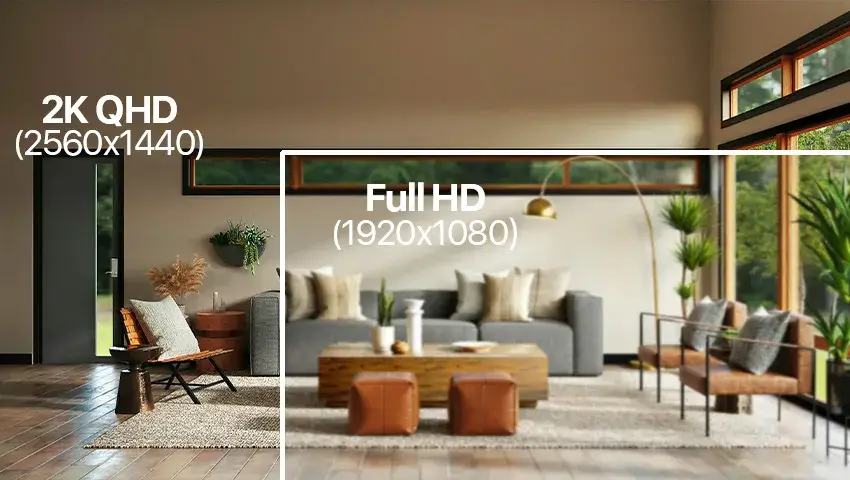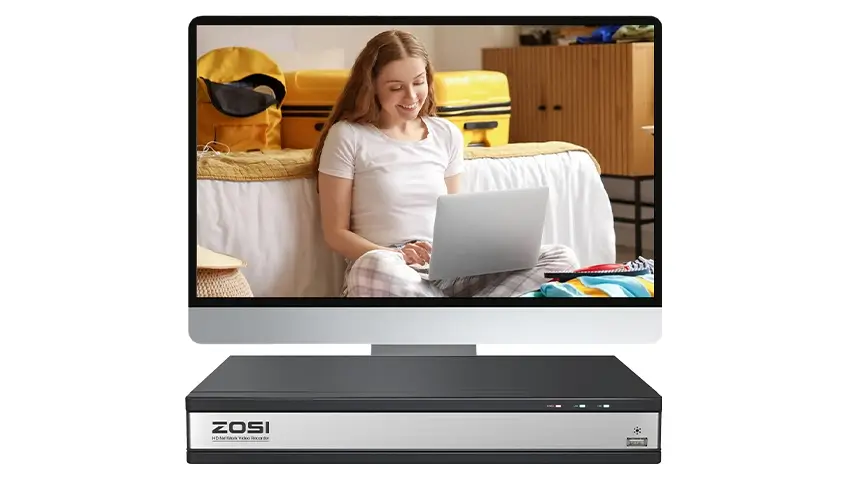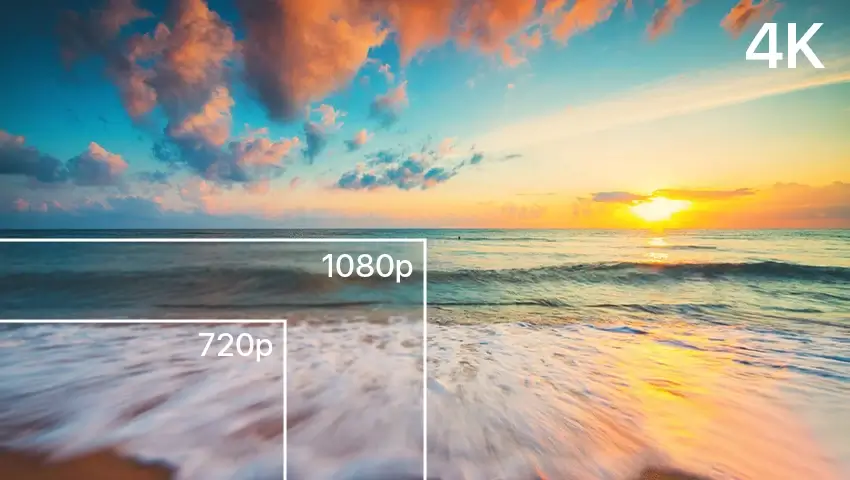In today’s rapidly evolving technology, understanding different display resolutions is key to making informed decisions when purchasing devices like cameras, monitors, and televisions. “2K” resolution is often mentioned but not always fully understood. This blog will dive into the details of 2K resolution, how it compares to other resolutions, and when it might be the best choice for your needs.
Contents
What Is 2K Resolution?
“2K” refers to a display resolution of approximately 2000 pixels horizontally. In most cases, the resolution is 2048 x 1080 pixels, which is common in digital cinema standards. The “2K” name comes from the approximate 2,000 horizontal pixels. This resolution is a step up from Full HD (1920 x 1080) but is lower than 4K resolution (3840 x 2160).
Though not as commonly discussed as 4K or 8K, 2K resolution is important for many industries, particularly in film, video production, and security. It offers better image clarity and more detail than standard HD, without the large processing demands of 4K. But is it the right choice for your needs? Let’s explore further.
How 2K Resolution Compares to Other Resolutions
Understanding how 2K resolution compares to other common resolutions helps highlight its advantages and limitations.
1. Comparison with 1080p (Full HD)
1080p, also known as Full HD, has a resolution of 1920 x 1080 pixels, which is a little smaller than 2K. While the difference in horizontal pixels may seem minimal (about 128 pixels), this slight increase enhances sharpness and clarity, particularly on larger screens. If you’re upgrading from a 1080p screen, the improvement with 2K is noticeable, particularly in areas requiring finer details, such as text or intricate designs.
2. Difference Between 2K, 4K, and 8K
4K resolution quadruples the pixel count of 1080p and doubles that of 2K, boasting 3840 x 2160 pixels. The leap from 2K to 4K is significant in clarity and detail, particularly on large screens or when viewed up close. However, 4K requires more bandwidth for streaming, more powerful hardware for gaming, and larger file sizes for video recording.
Meanwhile, 8K resolution takes things to the next level, with an astonishing 7680 x 4320 pixels, making it suitable for giant displays and future-forward applications. However, the content and devices that support 8K are still limited.
3. When 2K is the Right Choice
2K resolution strikes a balance between cost, performance, and image quality, making it an excellent choice for medium-sized displays, especially when 4K is unnecessary or overkill. It’s also commonly used in professional video production as a filming standard, and its slightly larger file sizes compared to 1080p make it manageable for storage without compromising much on quality.
Applications of 2K Resolution
2K resolution has versatile applications in different fields.
1. Security Cameras
Many security cameras use 2K resolution to capture clearer footage compared to 1080p, making it easier to recognize faces, license plates, and other small details. The higher resolution improves video quality without overwhelming bandwidth or requiring excessive storage, making it a practical solution for both commercial and residential surveillance systems.
2. Benefits for Home Entertainment and Gaming
For home entertainment, 2K resolution can be ideal for moderately sized TVs and monitors where 4K might be unnecessary. Many gaming monitors also support 2K resolution (often referred to as 1440p) because it offers a balance between visual quality and performance. Gamers appreciate the improved clarity over 1080p without the demanding hardware requirements that 4K brings.
3. 2K in Professional Settings: Film and Photography
In digital cinema, 2K has been a long-standing resolution standard, providing excellent image quality without the massive file sizes of 4K. In photography, 2K displays are used for photo editing, offering enough detail to make precise edits while keeping processing times manageable.
Advantages of 2K Resolution
What makes 2K resolution a good option for certain users and applications? Here are some key advantages:
1. Clearer Image Quality Compared to 1080p
While 2K isn’t as sharp as 4K, the step up from 1080p is noticeable. Text looks sharper, images appear crisper, and the viewing experience is more refined. This makes 2K especially appealing for those who want something better than HD but don’t want to invest in 4K.
2. Enhanced Detail for Medium-Sized Screens
For most medium-sized displays (24-32 inches), 2K resolution offers a sweet spot. It provides enhanced detail without being as resource-heavy as 4K. This makes it ideal for home offices, gaming setups, and mid-range TV viewing.
3. Balance Between High Resolution and Affordability
2K monitors and cameras tend to be more affordable than their 4K counterparts, while still offering much better performance than 1080p models. This makes them a great middle-ground option for users who want a noticeable improvement in quality without the higher costs associated with 4K.
Drawbacks of 2K Resolution
Though 2K resolution offers many benefits, it also comes with some limitations.
1. Lower Resolution Compared to 4K and 8K
While 2K is an improvement over 1080p, it pales in comparison to 4K and 8K, particularly on larger screens where every pixel counts. For users seeking the highest possible detail, particularly in large TVs or high-end gaming systems, 4K or higher may be a better choice.
2. Not Ideal for Very Large Displays
For large displays (above 32 inches), 2K resolution may not be enough to avoid visible pixelation, especially if you sit close to the screen. In such cases, 4K or higher resolutions are typically recommended to maintain image sharpness.
3. Limited Availability of Native 2K Content
Most streaming services and media platforms tend to focus on 1080p and 4K content, which means native 2K content can be harder to find. This isn’t a huge issue since 2K can easily display both 1080p and 4K content, but it’s something to keep in mind.
FAQs
1. Can the human eye tell the difference between 2K and 4K?
Yes, but the difference depends on screen size and viewing distance. On smaller screens or when sitting far from the display, the difference between 2K and 4K may not be easily noticeable.
2. Is 2K good enough for gaming and movies?
Absolutely. For most gamers and movie watchers, 2K offers a noticeable improvement over 1080p without the performance overhead of 4K, especially on mid-sized displays.
3. What devices support 2K resolution?
Many devices support 2K resolution, including gaming monitors, security cameras, and some smartphones and tablets. It’s also a popular choice in digital cinema and professional video production.
Conclusion
In conclusion, 2K resolution offers a significant improvement over 1080p without the added cost and system requirements of 4K. It strikes a perfect balance for users looking for a clear, high-quality display for gaming, home entertainment, or security systems. While it may not offer the cutting-edge sharpness of 4K or 8K, its advantages in performance and affordability make it an excellent choice for many applications.





